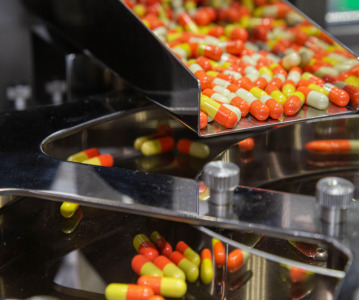Rentschler Invests EUR 24 Million in Stainless Steel Bioreactor Manufacturing

Rentschler Biotechnologie GmbH, a contract manufacturing organization (CMO) for the development and production of biopharmaceuticals, announces the investment of €24 million to build a Twin system with two 3000-L stainless steel bioreactors mainly targeting market supply at the company’s site in Laupheim, Germany. The Twin system should be operational in early 2017.
The Twin system is designed for running two main bioreactors in parallel with one shared downstream processing unit thus providing higher throughput while reducing incremental labour costs involved. It integrates well into the existing 3000-L GMP line and will more than double the production capacities for cell culture-derived proteins. The Twin system allows us to run cell culture processes in fed-batch mode with a very high output in a single suite.
“The expansion will strengthen our global competitiveness and increase our market awareness of being a CMO partner of first choice all the way down from early clinical trials up to approval and market supply with a wide range of manufacturing technologies to offer” explains Frank Ternes, Chief Business Officer at Rentschler.
In the last few years, Rentschler has been heavily investing in single-use technology and only recently announced that it will add a new 2000-L single-use bioreactor. Nevertheless, manufacturing in stainless steel is far from being outdated. Rentschler is experiencing a high demand for stainless steel bioreactor capacity, mainly for market supply, but also for late clinical phases. The criteria for bioreactor selection includes the characteristics of the product to be manufactured, the approval phase, the expected volume requirements, the required flexibility, and competitive pricing due to optimal technological fit.
Related News
-
News Pharmapack Awards 2024 Patient-Centric Design Award Winner – Dr Ferrer BioPharma
The 2024 Pharmapack Awards celebrated the best in innovation and design for the pharmaceutical packaging and drug delivery industry on January 24, 2024. -
News Women in Pharma: Minding the Gap at Pharmapack 2024
2024 marks the first year Pharmapack will host a Diversity track dedicated to bridging the gap within the pharmaceutical packaging and drug delivery sector. The track includes a panel discussion on 'Enabling Diversity in the Workplace,' focused... -
News Pharmapack Awards 2024 - Celebrating Packaging and Drug Delivery Innovation
The 2024 Pharmapack Innovation Awards ceremony celebrated the best in pharmaceutical packaging and drug delivery innovation at all levels. The awards were held on January 24, 2024 at the Paris Expo Porte de Versailles. -
News 2024 Pharma Industry Trends Outlook: Collaboration, Market Maturity, and Digital Futures
The annual CPHI Online 2024 Pharma Trends Outlook, in partnership with Arvato Systems, identifies 12 key industry trends shaping the life sciences industry in the coming year. -
News New Novo Nordisk AI hub for drug discovery to open in London, UK
Danish pharmaceutical giant Novo Nordisk will be opening an AI-based research facility in the heart of London to advance drug discovery operations. -
News BioNTech to begin mRNA vaccine manufacturing in Rwanda by 2025
German biotechnology company BioNTech has stated their intentions to begin production at their mRNA vaccine factory in Rwanda by 2025, which will mark the first foreign mRNA vaccine manufacturing site on the continent of Africa. -
News Women in Pharma: Looking back on 2023 and moving forward to 2024
In this monthly series, we interview women from across the pharmaceutical industry and supply chain to discuss the importance of gender diversity in healthcare, the workplace, and beyond. -
News CPHI Barcelona 2023: Partnering for Success – Managing Outsourcing Relationships to Optimise Manufacturing Operations
During CPHI Barcelona 2023, insightful content sessions offered attendees the chance to explore trending topics with expert speakers and panellists. Here, we summarise what the pharma industry and supply chain are talking about the most.
Position your company at the heart of the global Pharma industry with a CPHI Online membership
-
Your products and solutions visible to thousands of visitors within the largest Pharma marketplace
-
Generate high-quality, engaged leads for your business, all year round
-
Promote your business as the industry’s thought-leader by hosting your reports, brochures and videos within your profile
-
Your company’s profile boosted at all participating CPHI events
-
An easy-to-use platform with a detailed dashboard showing your leads and performance







